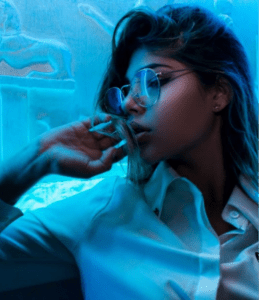On May 19, Blizzard Entertainment, developer of popular games Diablo 3 and StarCraft II, filed a lawsuit against the developers of the ValiantChaos MapHack, an unauthorized program created for use with the StarCraft II computer game. The online gaming community is split over whether Blizzard is in the right; it seems that one of the only things that they abhor more than hackers are copyright lawsuits.
The ValiantChaos MapHack, sold by the defendants in the suit, changes the gameplay of StarCraft II by allowing the player using the hack to see the whole play area. Under usual gameplay conditions, only a small portion of the play area is visible, with the rest of the map obscured by the “fog of war”. The user of the ValiantChaos program thus gains an advantage over his opponent, unless that player is also using the hack. Due to the significant difference in financial resources available to the two parties, it is unlikely that the case will ever see the inside of a courtroom. But what if it did?
Blizzard’s compliant consists of several counts, including direct, contributory, and vicarious copyright infringement, and claims that the distribution of the hack has caused irreparable damage to the game experience. Blizzard is seeking statutory damages, as well as a preliminary injunction against the creators of the hack that would prevent them from distributing it further.
MDY Industries v Blizzard Entertainment
This is not the first time that Blizzard has gone after programmers for modifying the game experience in one of its online multiplayer titles. In MDY Industries v Blizzard Entertainment, Blizzard sued the developers of a World of Warcraft “botting” program, which allowed a user to automate the actions of her in-game character. She could thus reap the rewards of playing the game, such as in-game items or experience, without actually having to play. Blizzard was successful in obtaining a summary judgment against MDY for tortious interference with contract, contributory and vicarious copyright infringement, and violation of the Digital Millennium Copyright Act’s (DMCA) provision prohibiting circumvention of technological protection measures (TPMs), which the Glider bot program did. On appeal to the Court of Appeals for the Ninth Circuit, the court reversed the district court’s finding of liability for secondary (contributory) copyright infringement and part of its finding of liability under the DMCA. However, it upheld the judgment against MDY for trafficking in technologies that circumvent a TPM that “effectively controls access” to a copyright-protected work [1]. Finally, the appeals court found that the tortious interference with contract count was inappropriate for summary judgment, and remanded it to the district court for reconsideration.
Will the results of the ValiantChaos MapHack case mirror those of MDY?
In MDY, Blizzard argued that because the users of the Glider program acted contrary to the terms of use and license agreement that they had agreed to upon installing the game, they exceeded the scope of the license they had been granted to reproduce the code of World of Warcraft and therefore infringed Blizzard’s copyright in the code. In its complaint in the current suit, Blizzard chose not to employ the same approach. Instead, it focused on direct infringement, arguing that the creators of the hack created an unauthorized derivative work of StarCraft II in the process of reverse engineering it in order to create a new program. Further, Blizzard contends that the hybrid program created by installing the ValiantChaos hack on top of the original StarCraft II code also creates an unauthorized derivative work.
Focusing solely on the counts of direct, contributory, and vicarious copyright infringement, the key consideration for the court will likely be whether the ValiantChaos hack is a derivative work under the Copyright Act. One of the more relevant cases on video game “mods” is Lewis Galoob Toys Inc v Nintendo of America Inc, which involved a hardware modification called the Game Genie that allowed players to modify the gameplay of games played on the Nintendo Entertainment System. The district court in Galoob ruled in the “mod” developer’s favour, finding that the Game Genie did not create derivative works of games published by Nintendo. This judgment was affirmed by the Ninth Circuit. Crucial to the reasoning of both courts was the fact that the Game Genie “is useless by itself, it can only enhance, and cannot duplicate or recaste, a Nintendo game’s output. It does not contain or produce a Nintendo game’s output in some concrete or permanent form, nor does it supplant demand for Nintendo game cartridges.”
The ValiantChaos hack shares these characteristics: it exists only to be used to supplement the StarCraft II experience and has no independent utility. Furthermore, use of the hack requires a copy of StarCraft II – the creators of the hack do not seek to supplant demand for Blizzard’s game. Indeed, if demand for StarCraft II did diminish, so would demand for their product. Moreover, the effect of the Game Genie is similar to that of the ValiantChaos hack in that it allows a player to make the game easier for herself. The fact that, as Blizzard mentions multiple times in its filing, the ValiantChaos hack is used in a multiplayer context, potentially harming the game experience for another player, is likely to be irrelevant in considering whether it is a derivative work.
However, in Micro Star v Formgen Inc the Ninth Circuit qualified the conclusions it reached in Galoob. At issue in this case was whether MAP files – player-made files containing arrangements of pre-existing art and characters for the game Duke Nukem – were unauthorized derivative works. In the end, the Ninth Circuit distinguished the MAP files from the Game Genie by stating that they described the audiovisual displays of the game, and therefore were permanent and fixed, unlike the displays produced by the Game Genie. Because the MAP files used the art assets of the game, the Ninth Circuit held that they were derivative works in the same way sheet music of a copyright-protected melody would be.
There is certainly room for the creators of the ValiantChaos hack to argue that their program is closer in operation to the Game Genie than it is to a MAP file. Its operation is limited to revealing the in-game map for a player, a small change that does not provide a wholly different gameplay experience. Moreover, though the Micro Star court did not say so, the MAP files had the potential to supplant demand for the original game. New player-created MAP files, representing new gameplay experiences, may have decreased demand for a potential official expansion to Duke Nukem. The MAP files differ from the Game Genie in this small, but important, aspect. The ValiantChaos hack has no potential to supplant demand, though it alters the game by making it easier – it is somewhat akin to the ability to skip obstacles granted by the Game Genie.
In the end, the game may be over before it begins
However, this prognosticating over the legal arguments that might be made by either side in a potential court case is likely to be all sound and fury, signifying nothing. The creators of the ValiantChaos hack are just that, hackers. They do not have the resources for a drawn-out court case against one of the largest video game companies in the world. The overwhelming likelihood is that they fold in the face of the legal threat, which is probably just what Blizzard expects them to do.
[1] 17 USC §1201(a)(2).
Adam Chan is an IPilogue Editor and graduate of the University of British Columbia Faculty of Law.


2 Responses
Very interesting analysis! Thanks for bringing this case to my attention.
Very detailed and thoughtful analysis, great job! I would like to add few of my own thoughts.
In accordance with most cases decide by U.S. courts, the emphasis is on economic profit. Specifically, it’s on whether the derivative work has an adverse economic effect on the original work.
But what about morality rights? In Nintendo of America v CamericaCorp, Nintendo sued Camerica because it sold a device that altered Nintendo games, giving users the ability to change the effects, levels, and other elements of the game. The main author of game, Miyamoto, stated that those alterations “destroyed my work by changing and mutilating the movements of the game characters, the scenery, the color… and had a detrimental effect on game play…my honor and reputation as a game creator were prejudiced by the use of the device…” As usual, the Court ruled the case on other issues, and did not address the creator’s moral claims. (Michela Fiorido, “Moral Rights and Mods: Protecting Integrity Rights in Video Games” (September 2013) 46 UBC Law Review at 747).
If morality rights is also a significant consideration (as I personally believe that it should be), then the differences between Game Genie and MAP File may be less important, as they would both infringe the morality right of the author. They both changed the way in how the game is originally intended to be played.
Furthermore, although it’s true that ValiantChaos would be unlikely to go through the trial, I don’t think it implies that Gaming Companies will have the upper hand when it comes to legal disputes. Although control in video games is always skewed in favor of gaming companies, many companies do care about the reactions and preferences of their consumers. Here are several examples:
1. When the news spread about Sony Computer Entertainment considering to put technological locks on games, they were faced with the wrath of gamers, technology publications, and bloggers. Consequently, Sony decided not to install the locks
2. Rooster Teeth Productions created the derivative work, “Red vs. Blue”, by using copyrighted content from the game Halo. However, due Red vs. Blue’s popularity among players, Microsoft allowed them to continue producing the series (now in its 10th season) without paying royalty or licensing fee.
3. Both Microsoft and Blizzard Entertainment have started to offer limited licenses to players, which allow players to infringe some copyright when creating UGC, and which give some protections to UGC. Nevertheless, those licenses are very limited and restrictive.
So although Gaming Companies do want revenue and control, and they do have the budget to go through lengthy trials, it does not necessarily mean they are dictators who give no considerations to players’ feelings. However, as you correctly pointed out in this case, ValiantHackers will unlikely find players on their side, given the traditional disdain that most players hold for cheats and mods. I know many players who told me that cheats take the challenge out of games, thus spoiling the games. Those who play fairly will also feel a great injustice against cheaters who effortlessly surpass them.